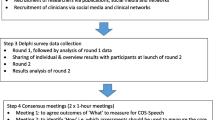Abstract
Dysarthria is a motor disorder of speech characterized by alteration of articulation and intelligibility of speech. The goal of dysarthria management is to optimize communication effectiveness for as long as possible. To help clinicians in monitoring disease progression and rehabilitation outcomes, the DESIRE tool analyzes several reading sessions in which the patients pronounce predetermined selected words aloud, elaborating a measure of how much the patient’s pronunciation deviates from those of previous sessions and the expected performance. In addition, the electronical record offers a comprehensive view of patient’s status, and the web access allows the care team to remotely monitor progresses, so that they can tailor rehabilitation programs over time. Through the possibility to understand the patient difficulty about specific phonemes, word length, consonant clusters, this innovative tool offers a method to assess and monitoring dysarthria, to address therapeutic strategies, and to provide useful requirements for clinical trials readiness.
Access this chapter
Tax calculation will be finalised at checkout
Purchases are for personal use only
Similar content being viewed by others
References
Enderby, P.: Disorders of communication: dysarthria. Neurological. Rehabilitation 110, 273–281 (2013)
Finch, E., Ivanek, M., Wenke, R.: The who, why, when, where, what and how of using outcome measures in dysarthria: a qualitative exploration of speech-language pathologists’ perspectives. Int. J. Speech-Lang. Pathol. 24, 12–21 (2022)
Lee, J., Madhavan, A., Krajewski, E., Lingenfelter, S.: Assessment of dysarthria and dysphagia in patients with amyotrophic lateral sclerosis: review of the current evidence. Musc. Nerve 64, 520–531 (2021)
Ishikawa, K., MacAuslan, J., Boyce, S.: Toward clinical application of landmark-based speech analysis: landmark expression in normal adult speech. J. Acoust. Soc. Am. 142, 441–447 (2017)
Yorkston, K.: Management of Motor Speech Disorders in Children and Adults (2010)
Chiaramonte, R., Pavone, P., Vecchio, M.: Speech rehabilitation in dysarthria after stroke, a systematic review of the studies. Eur. J. Phys. Rehabil. Med. 56, 547–562 (2020)
Marini, M., et al.: IDEA: an Italian dysarthric speech database. In: 2021 IEEE Spoken Language Technology Workshop (SLT), pp. 1086-1093 (2021)
Defazio, G., Guerrieri, M., Liuzzi, D., Gigante, A., Nicola, V.: Assessment of voice and speech symptoms in early Parkinson’s disease by the Robertson dysarthria profile. Neurol. Sci. Off. J. Ital. Neurol. Soc. Ital. Soc. Clin. Neurophysiol. 37, 443–449 (2016)
Duffy, J.: Motor Speech Disorders E-Book: Substrates, Differential Diagnosis, and Management. Elsevier Health Sciences (2019)
Piacentini, V., Zuin, A., Cattaneo, D., Schindler, A.: Reliability and validity of an instrument to measure quality of life in the dysarthric speaker. Folia Phoniatrica Et Logopaedica 63, 289–295 (2011)
Enderby, P., John, A., Petheram, B.: Therapy Outcome Measures for Rehabilitation Professionals: Speech and Language Therapy, Physiotherapy. Occupational Therapy. Wiley, Hoboken (2006)
Jaddoh, A., Loizides, F., Rana, O.: Interaction between people with dysarthria and speech recognition systems: a review. Assist. Technol. 18, 1–9 (2022)
Sevitz, J., Kiefer, B., Huber, J., Michelle, S.: Troche: obtaining objective clinical measures during telehealth evaluations of dysarthria. Am. J. Speech-Lang. Pathol. 30, 503–516 (2021)
Acknowledgments
This work is supported by University of Pisa Research Project Program (PRA).
Author information
Authors and Affiliations
Corresponding author
Editor information
Editors and Affiliations
Rights and permissions
Copyright information
© 2023 The Author(s), under exclusive license to Springer Nature Switzerland AG
About this paper
Cite this paper
Donati, M. et al. (2023). A Clinical Tool for Prognosis and Speech Rehabilitation in Dysarthric Patients: The DESIRE Project. In: Berta, R., De Gloria, A. (eds) Applications in Electronics Pervading Industry, Environment and Society. ApplePies 2022. Lecture Notes in Electrical Engineering, vol 1036. Springer, Cham. https://doi.org/10.1007/978-3-031-30333-3_52
Download citation
DOI: https://doi.org/10.1007/978-3-031-30333-3_52
Published:
Publisher Name: Springer, Cham
Print ISBN: 978-3-031-30332-6
Online ISBN: 978-3-031-30333-3
eBook Packages: EngineeringEngineering (R0)




